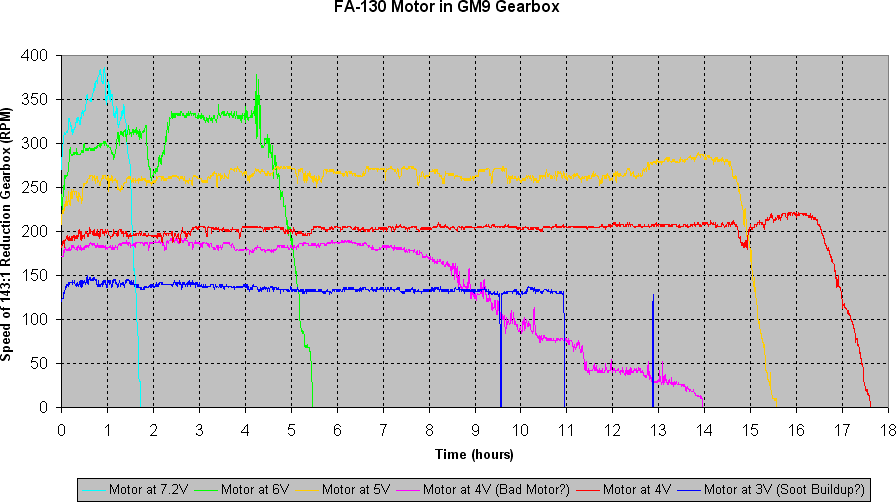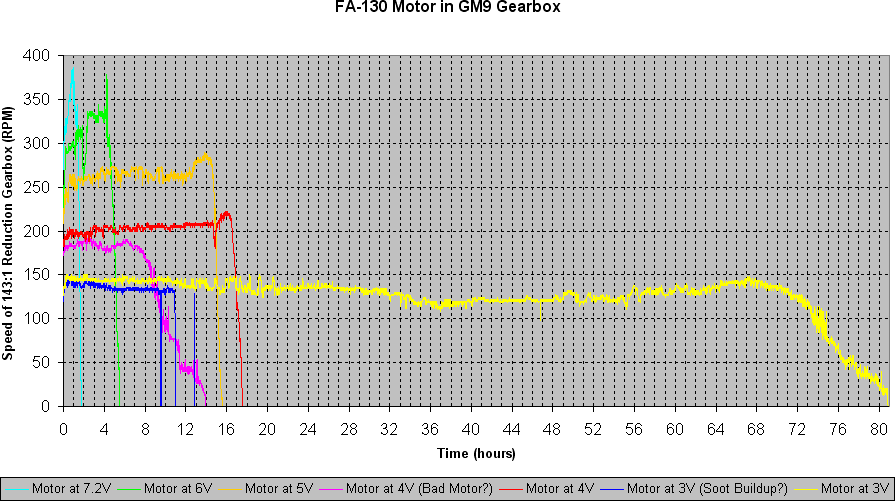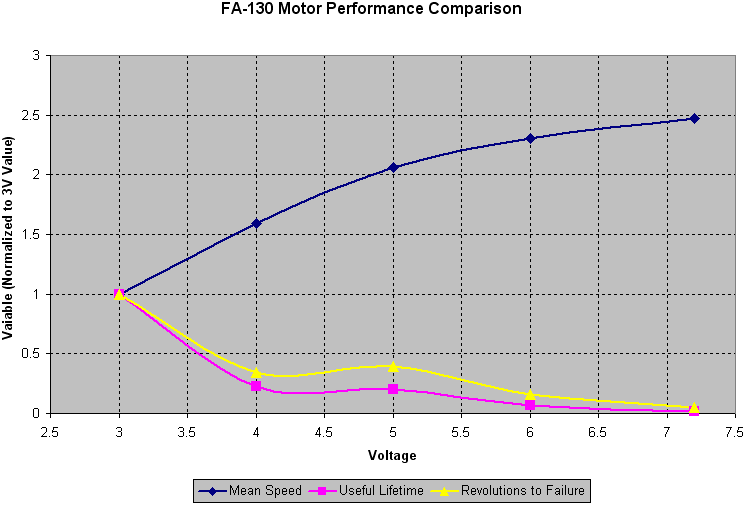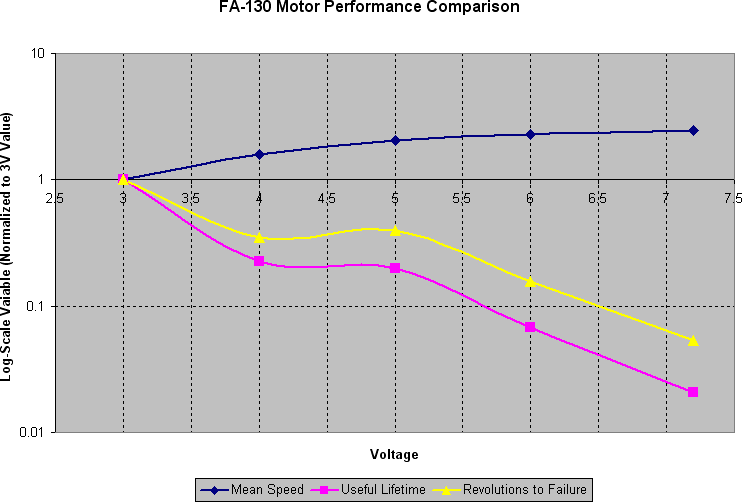Support » Tamiya “Toy” Motor Testing by Adam Borrell (a.k.a nexisnet) »
5. Final Results: Motors Running at 3 V
Well the testing is all done, and the results speak for themselves.
The Results:
 |
There is a pronounced operational lifetime shortening as you increase the voltage (no surprise). Also, I had trouble with a couple of individual motors. Again, the first motor I tested at 4V (purple) died an early, but long and drawn out death, so there may have been some defect in it to begin with. The first motor I tried at 3V (dark blue) kept stopping short, but would mysteriously come back to life (and full speed) hours later, when no one had so much as opened the mini-fridge. I took it apart and found that the brushes were in fine shape, but the grooves had already started to form in the commutator and were full of soot. So, if you’re having trouble with a motor stopping for no good reason, a blast of compressed air or some non-conducting lubricant (i.e. white teflon grease) through the vent in the plastic cap could make all the difference.
Speaking of difference, how does all this compare to the motor’s performance at 3V (the recommended peak voltage)? Wow:
 |
Seriously! Stepping up to 4V from 3V cut the operational life down to less than 1/4 of nominal! Another way to interpret the data is to look at the relationships between them normalized to the 3V motor values, since these relationships should (ideally) hold for any gearing/loading (I defined the end of the “useful lifetime” as when the output speed drops past half of the overall average speed):
 |
There is a vaguely logarithmic relationship after all, and besides, every technical presentation needs at least one chart with a log-scale axis:
 |














